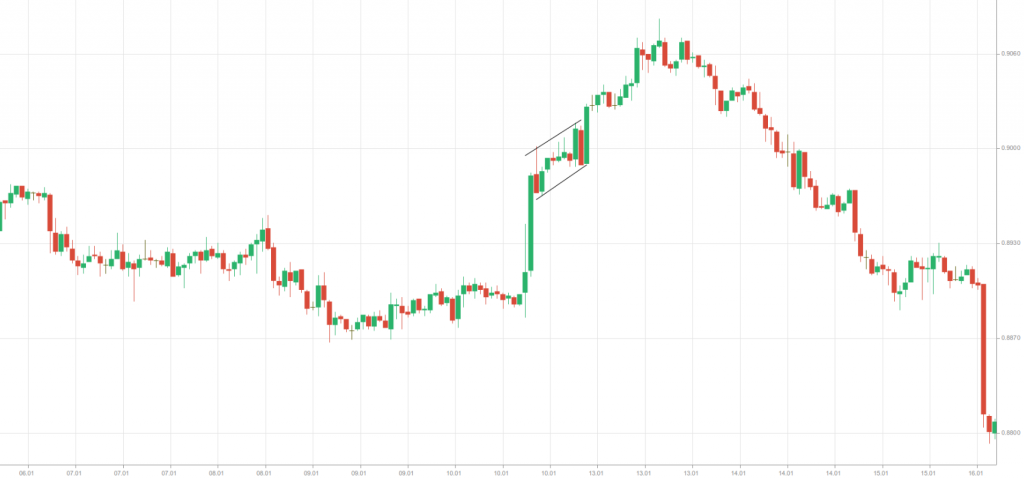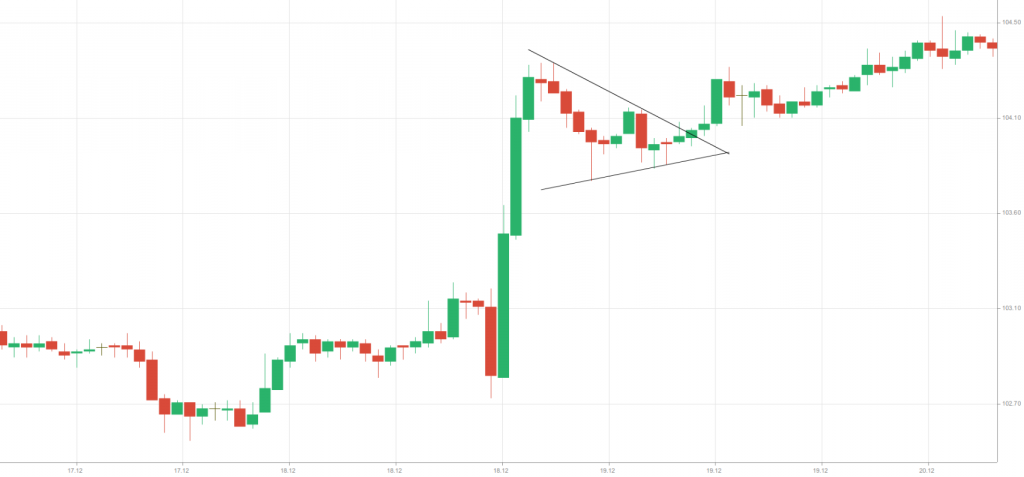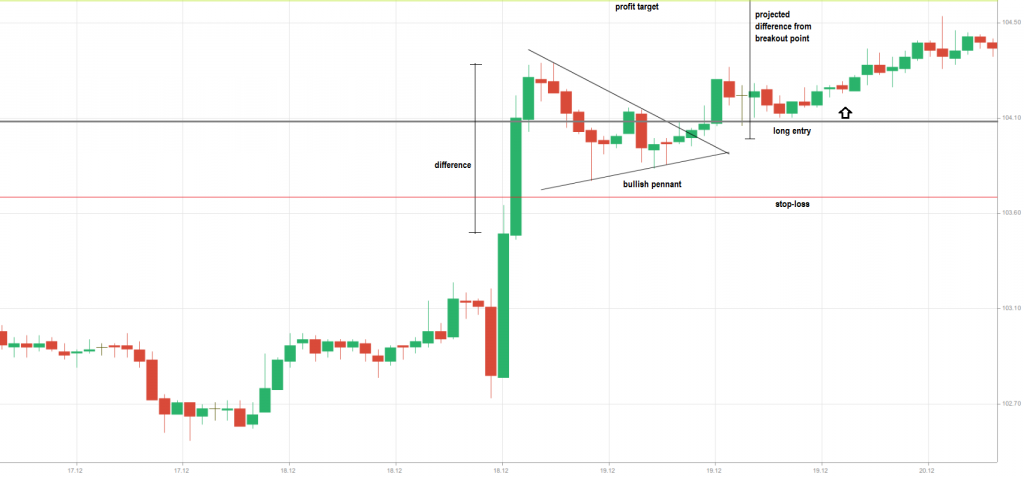Flags and Pennants Price Pattern
This lesson will cover the following
- How is a flag formed?
- How is a pennant formed?
- How to trade these patterns?
nants are almost the same as flag
These are short-term continuation patterns, which can be observed frequently. They may appear as wedges, rectangles and triangles, but are significantly smaller in size, while they usually have not so accurate shape.
As both formations show a certain consolidation in the market, this suggests that the prior trend is strong. The majority of market players continue holding their positions, exits from the market are almost none, which urges more traders to join in the direction of the previous trend.
After a breakout in either direction occurs, price action usually runs immediately, with few pullbacks or throwbacks being present. Many traders prefer flags and pennants, namely because of this circumstance.
Flags
Flags represent short channels, as their slope is in the opposite direction compared to that of the prior trend. Sometimes their slope may coincide with the direction of the trend, which implies that this trend may be even stronger.
Volume usually decreases during the formation of the flag. These patterns form over a short period of time – from several days to several weeks. Flags are usually preceded by very steep price movement.
Here we can see what a bullish flag looks like.
On the 1-hour chart of AUD/USD above we can see another flag.
Pennants
Pennants are almost the same as flags. The difference between the two patterns is that trend lines of pennants eventually converge, which forms a mini triangle. Trend lines of flags are usually parallel. The slope of pennants usually is in the opposite direction compared to that of the prior trend. Sometimes these formations may be horizontal or in the same direction as the major trend.
Pennants are different from wedges, because they form in a shorter amount of time and are preceded by a huge price trend. As the pennant formation develops, volume usually decreases. On the breakout, following the pattern, volume increases.
Here we can see what a bullish pennant looks like.
On the 1-hour chart of USD/JPY above another bullish pennant is visualized.
Trading these patterns
Flags and pennants are preferable trading patterns. A crucial feature to look for, in order to identify them, is the occurrence of a sharp and steep trend, preceding these formations. Traders usually do not act, until a complete formation has appeared. They wait for the breakout, following these patterns. It occurs, once a trend line is breached, and is usually in the same direction as that of the prior trend.
In a rising trend the profit target is measured by taking the distance from the beginning of the steep trend to the first reversal point in the pattern and projecting this distance from the point, where a breakout to the upside occurs. A long position needs to be entered into, when price action penetrates the upper trend line (resistance). A stop-loss needs to be placed just below the lower trend line (support).
In a downtrend the profit target is measured by taking the distance from the beginning of the steep trend to the first reversal point in the pattern and projecting this distance from the point, where a breakout to the downside occurs. A short position needs to be entered into, when price action penetrates the lower trend line (support). A stop-loss needs to be placed just above the upper trend line (resistance).
We decided to show an example of how to trade a bullish pennant. On the 1-hour chart of USD/JPY above we show the position of our protective stop, the position of our profit target, while going long this currency pair. In this case it is appropriate to wait for the candle, breaching the upper bound to close above this bound. The long entry may be, when the next candle begins to form. If one wants further confirmation, that the breakout is indeed real, he/she may wait for another candle to close above the upper bound and buy, when the next candle starts forming (just like the case above).


